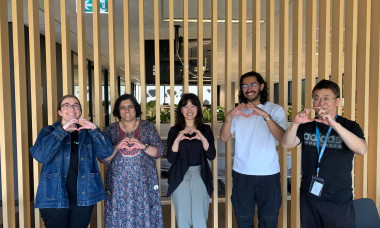Mapping the future ‘high road’ for higher education
In 2019, two high profile academics issued a warning about the higher education sector’s possible overexposure to international students. With no knowledge of the 2020 pandemic that was to come, but with the foresight to identify it as a risk factor, the two academics (sociologist Salvatore Babones and social demographer Bob Birrell) had no idea how relevant their warning would soon become.
Analysed in-depth as part of a joint discussion paper prepared by The Business Council of Australia and the Asia Society of Australia, the two organisations suggest a way forward for the sector that will avoid Australian education institutions reverting to some kind of insular, domestically-oriented past, and instead take ‘the high road’ into a future that will be just as international as it will be local.
What is the ‘high road’?
The ‘high road’ is described as a cooperative rather than competitive effort from the higher education sector as a whole to reposition itself both internationally and domestically as a leading provider of new forms of learning and opportunity, including for both non-award and degree students.
Assisted by governments, regulators and the likes of Austrade, the sector would need to leave behind a ‘pre-COVID focus on declining standards, diminished funding and internal grievances and rivalries’ to take a proactive, outward-looking, future-focused and sector-wide view of the future.
This could include a stronger role for regional higher education providers, who could take a more proactive role to engaging with international markets, as well as a more humble approach from Group of Eight players, who are encouraged to see the sector’s future success as important to their own.
1. Diversify the source
Higher educators will need to think beyond a single source country – whether China, or the huge potential of India – to a wider range of markets, including countries like Thailand, Malaysia, Vietnam, Indonesia, Taiwan, the Philippines, Colombia, Peru and Chile, or other regions like Africa and the Middle East. This will need to include an effort to shift away from simply charging all international students the same rates that the Chinese international market has been willing to pay in the past.
2. Focus on quality
‘Substandard’ recruitment and learning standards for Chinese international students will need to be refined overall. This could involve improving student entry point quality through higher academic and language standards, the introduction of AI platforms for auto-assessment, or the incentivisation of higher calibre postgrad student recruitment through agents. It is suggested educators focus on the China market’s demand for a wider range of courses and better work-integrated learning.
3. Increase partnerships
Establishing and maintaining partnerships with higher education providers in more international markets could provide a range of benefits. This would include providing a stream of higher quality students less exposed to the ups and downs of other recruitment efforts, or being an incubator for new types of collaboration across borders, like international exchanges for local students, new cross-border learning initiatives from academic teams or deeper cooperation in the area of research.
4. Leverage alumni
Higher educators are advised to evolve their ‘self-referential’ approach to engaging extensive alumni networks for things like fundraising efforts, and instead take a coordinated approach to aligning their connection with alumni needs and expectations. This could include a shift towards lifelong learning with further education opportunities like executive education and micro-credentialling, and better engaging alumni who are proud of their Australian qualifications as brand ambassadors abroad.
5. Increase intensive courses
The sector will need to diversity the historical product mix beyond a focus on in-person campus bachelor degrees if it is to take advantage of a growing appetite for intensive and online learning, (supported by an explosion in technologies making this easier). Opportunities could be easiest in the non-award and pre-award education segments, with examples including short-form executive education intensives or longer online courses delivered through more than one institution.






